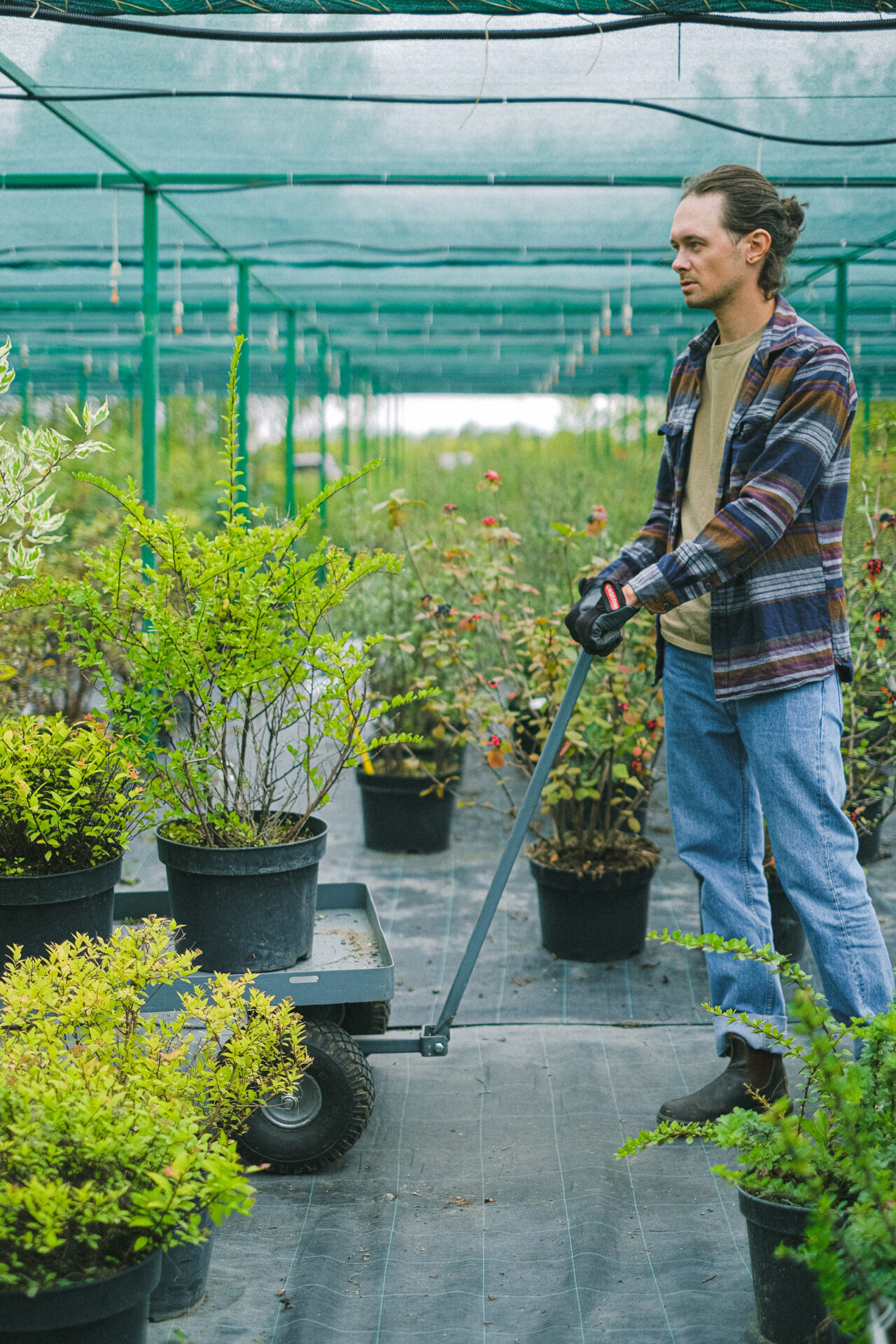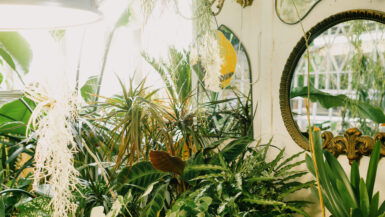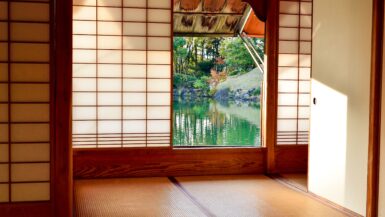Indoor vertical gardening has rapidly gained popularity as an innovative and aesthetically pleasing way to maximize limited indoor spaces while cultivating various plants. However, even the most green-thumbed enthusiasts can encounter pitfalls that may hinder the success of their vertical garden. This article will delve into the common indoor vertical gardening mistakes you can face, providing valuable insights to ensure a thriving and sustainable garden.
From selecting appropriate plants to maintaining optimal lighting, irrigation, and nutrient levels, we will guide you through these potential challenges to establish a flourishing indoor vertical garden. So, let’s embark on this journey and learn how to avoid these common mistakes, ensuring the health and longevity of your vertical garden.
Choosing Incompatible Plant Species
Selecting the right plants for your indoor vertical garden is crucial to its success. A common mistake gardeners make is choosing incompatible plant species that compete for resources or have different environmental requirements. By being mindful of the types of plants you include in your garden, you can avoid these issues and create a harmonious and thriving ecosystem. In this section, we’ll discuss the importance of selecting compatible plant species and provide some tips to help you make the right choices for your indoor vertical garden.
Understand Plant Requirements and Growth Habits
Before adding plants to your indoor vertical garden, it’s essential to understand their individual needs and growth habits. Different plants require varying amounts of light, water, and nutrients, and some species may be incompatible with others due to their growth patterns. For instance, aggressive or invasive plants may outcompete their neighbors for resources, leading to an imbalanced and unhealthy garden. Consider researching each plant’s requirements and selecting species with similar needs to ensure a harmonious coexistence.
Consider Vertical Spacing and Light Exposure
Vertical spacing and light exposure are other essential factors when selecting plants for your indoor vertical garden. Some plants may cast shadows on others, hindering their growth and overall health. Be mindful of each plant’s growth pattern and light requirements, placing taller and light-hungry species at the top of the garden and smaller, more shade-tolerant plants towards the bottom. This arrangement will help ensure that all plants receive the appropriate light needed to thrive.
Mixing Edibles and Ornamentals
Indoor vertical gardens offer the opportunity to grow both edible and ornamental plants. However, it’s essential to be cautious when mixing these two types of plants. Some decorative plants may have toxic properties that can contaminate edible plants, while others may attract pests that could harm your food crops. To avoid these issues, consider dedicating separate sections of your vertical garden to edibles and ornamentals, or choose ornamental plants known to be safe and beneficial when grown alongside edibles.
Read More on Choosing the Right Garden
To ensure you make the right choices for your indoor vertical garden, it’s essential to be knowledgeable and consider various factors. For more information on selecting the appropriate vertical garden for your lifestyle, check out our article on How to Choose the Right Indoor Vertical Garden for Your Lifestyle. By being mindful of these considerations, you can create a thriving and sustainable indoor vertical garden free from the common pitfalls associated with incompatible plant species.
Improper Lighting Conditions
A well-lit environment is essential for the success of your indoor vertical garden, as inadequate lighting can lead to weak, leggy plants or even prevent growth altogether. It’s crucial to understand the specific lighting needs of your plants and ensure they receive the appropriate amount of light to flourish. In this section, we will explore common mistakes related to improper lighting conditions and provide valuable tips to help you optimize the lighting in your indoor vertical garden, promoting a healthy and thriving ecosystem.
Ignoring the Light Requirements of Individual Plants
Each plant species has its unique lighting requirements, and neglecting these needs can lead to an unhealthy garden. To avoid this issue, research the specific light needs of each plant you wish to include in your vertical garden and group plants with similar requirements together. This approach will ensure that all plants receive the appropriate light for their specific needs and can coexist harmoniously.
Failing to Supplement Natural Light
Indoor spaces often lack the natural light intensity required for many plants to thrive. To compensate for this, consider investing in supplemental lighting, such as LED grow lights. These lights mimic the sun’s spectrum and provide the required light intensity for optimal plant growth. These lights can be adjusted to suit the specific needs of your plants, ensuring they receive the appropriate amount and quality of light.
Overlooking Light Duration
In addition to light intensity, the duration of light exposure is a crucial factor in plant growth. Some plants require long periods of light exposure, while others benefit from shorter durations. To optimize the light duration for your indoor vertical garden, use an automatic timer to control your supplemental lighting, ensuring your plants receive the appropriate amount of light for their specific needs.
Adapting to Seasonal Changes
As the seasons change, so do the natural lighting conditions in your indoor space. Adapting your lighting strategy to accommodate these changes and ensuring your plants receive the necessary light for optimal growth is essential. For instance, you may need to increase supplemental lighting during winter to compensate for the reduced natural light. For more tips on adapting your indoor vertical garden to seasonal changes, check out our article on How to Grow a Thriving Indoor Vertical Garden in Winter.
By paying close attention to the lighting conditions in your indoor vertical garden and making the necessary adjustments to accommodate the specific needs of your plants, you can create an environment that fosters healthy growth and a thriving ecosystem. Avoiding common mistakes related to improper lighting will ensure the long-term success of your indoor vertical garden, allowing you to enjoy its beauty and benefits.
Overcrowding of Plants
A common mistake in indoor vertical gardening is overcrowding plants, which can lead to poor air circulation, increased risk of disease, and competition for resources. Ensuring adequate spacing between plants is essential for maintaining their overall health and enhancing the aesthetic appeal of your indoor vertical garden. This section will discuss the consequences of overcrowding and provide helpful tips on maintaining optimal spacing to avoid this common pitfall.
Consequences of Insufficient Space
Overcrowded plants can struggle to receive the necessary light, water, and nutrients, leading to weak and stunted growth. Additionally, poor air circulation in densely packed gardens can create a humid environment, promoting the growth of mold, mildew, and other diseases. Furthermore, plants nearby are more likely to spread pests and diseases to one another, potentially causing widespread damage to your vertical garden.
Aligning Plant Sizes with Space Availability
When selecting plants for your indoor vertical garden, it’s essential to consider their mature size and growth habits. Some plants may initially appear small but can quickly outgrow the available space, leading to overcrowding issues. Be sure to research each plant’s mature size and growth pattern, and choose species well-suited to the space in your vertical garden.
Proper Plant Spacing and Arrangement
To avoid overcrowding, it’s crucial to ensure that each plant in your indoor vertical garden has sufficient room to grow. Please pay close attention to the recommended spacing guidelines for each plant species and arrange them accordingly. This may involve placing plants with similar sizes and growth habits together or staggering plants strategically to maximize available space. Additionally, consider trimming or pruning plants to maintain optimal spacing and prevent overcrowding.
Rotating and Replacing Plants
Regularly rotating and replacing plants in your indoor vertical garden can help maintain optimal spacing and prevent overcrowding. As plants mature and outgrow their allotted space, consider removing them from the vertical garden and replacing them with smaller, younger plants. This practice ensures proper spacing and allows the opportunity to introduce new plant varieties and maintain visual interest in your garden.
By being mindful of plant sizes, growth habits, and spacing requirements, you can prevent overcrowding and create a healthy, thriving indoor vertical garden. Adequate space between plants contributes to their overall health and enhances the visual appeal of your garden, making it a beautiful and functional addition to your indoor living space.
Ignoring Pest Control Measures
Pest control is an essential aspect of maintaining a healthy indoor vertical garden, but gardeners often overlook or neglect it. This subsection will explore the importance of implementing effective pest control measures and discuss various strategies to prevent and manage pests in your indoor vertical garden. By being proactive and vigilant, you can avoid the detrimental effects of pests on your plants and ensure the longevity of your vertical garden.
Recognizing the Signs of Pest Infestation
The first step in effective pest control is recognizing the signs of infestation. Look for damaged or discolored leaves, the presence of small insects, or irregular growth patterns. Early detection is crucial for preventing widespread damage and containing the problem before it becomes unmanageable. Regularly inspect your plants and take action at the first sign of a pest issue.
Preventing Pests Through Cultural Practices
Adopting good cultural practices in your indoor vertical garden can prevent many pest problems. Proper spacing between plants promotes air circulation and reduces humidity, which can discourage the growth of pests and diseases. Keep your garden area clean and free of debris that could harbor pests or provide them with a breeding ground.
Using Integrated Pest Management Techniques
Integrated Pest Management (IPM) is a holistic approach to pest control that uses cultural, biological, and chemical control methods to manage pests effectively and sustainably. IPM strategies for an indoor vertical garden may include introducing beneficial insects, such as ladybugs or lacewings, that prey on common pests or using organic or chemical pesticides as a last resort in targeted applications. By employing various pest control methods, you can minimize the risk of infestation and maintain a healthy garden ecosystem.
Monitoring and Adjusting Your Pest Control Strategy
Effective pest control in an indoor vertical garden requires ongoing monitoring and adjustment. Regularly assess the health of your plants and the presence of pests, and adjust your pest control strategies as needed. This may involve increasing or decreasing the frequency of pesticide applications, introducing new beneficial insects, or modifying your cultural practices. By staying vigilant and adapting your approach, you can keep pests at bay and maintain a thriving indoor vertical garden.
Taking pest control measures seriously is crucial for the success of your indoor vertical garden. You can prevent and manage pests by recognizing the signs of infestation, adopting good cultural practices, implementing Integrated Pest Management techniques, and monitoring your garden regularly. This proactive approach will help ensure the health and longevity of your plants and create a beautiful and flourishing garden environment.
Inadequate Watering Techniques
A thriving indoor vertical garden relies on proper watering techniques to meet each plant’s specific hydration needs. Inadequate watering can lead to various issues, including stunted growth, weak root systems, and increased susceptibility to pests and diseases. In this subsection, we will discuss some common mistakes related to watering in indoor vertical gardens and provide valuable insights on effectively managing your garden’s watering needs.
Overwatering or Underwatering Your Plants
Both overwatering and underwatering can have detrimental effects on your indoor vertical garden. Overwatered plants can experience root rot, fungal growth, and reduced oxygen availability, while underwatered plants may become stressed and more vulnerable to pests and diseases.
To avoid these issues, familiarize yourself with the specific water requirements of each plant species in your garden and adjust your watering schedule accordingly. Monitoring the moisture level of your garden’s growing medium can also help maintain optimal hydration levels.
Uneven Water Distribution
Ensuring even water distribution in a vertical garden can be challenging. Plants at the top of the garden may receive more water than those at the bottom, leading to imbalances in hydration levels. To address this issue, consider employing an efficient irrigation system, such as a drip irrigation system or a self-watering vertical garden planter. These systems can help deliver water evenly to all plants in your garden, ensuring each plant receives the appropriate water for its specific needs.
Ignoring Evaporation and Transpiration Rates
Indoor environments can have varying humidity levels, which can impact the rate at which water evaporates from your garden’s growing medium or is lost through plant transpiration. To maintain optimal hydration levels, it’s essential to consider these factors and adjust your watering schedule as needed. For example, in a dry indoor environment, you may need to water your vertical garden more frequently to compensate for increased evaporation and transpiration rates.
Not Accounting for Seasonal Changes
As seasons change, so do your plants’ water requirements. During warmer months, plants may need more frequent watering, while their water needs may decrease in colder months. Adjust your watering schedule to accommodate these seasonal changes and ensure that your plants receive the appropriate amount of water throughout the year. This proactive approach will help maintain the health and vitality of your indoor vertical garden, regardless of the season.
By being mindful of your indoor vertical garden’s watering needs and avoiding common mistakes related to inadequate watering techniques, you can create a flourishing and sustainable garden environment. Proper watering is essential for your plant’s overall health and well-being. By taking the time to understand and address the specific hydration requirements of each species, you can ensure the long-term success of your indoor vertical garden.







Leave a reply